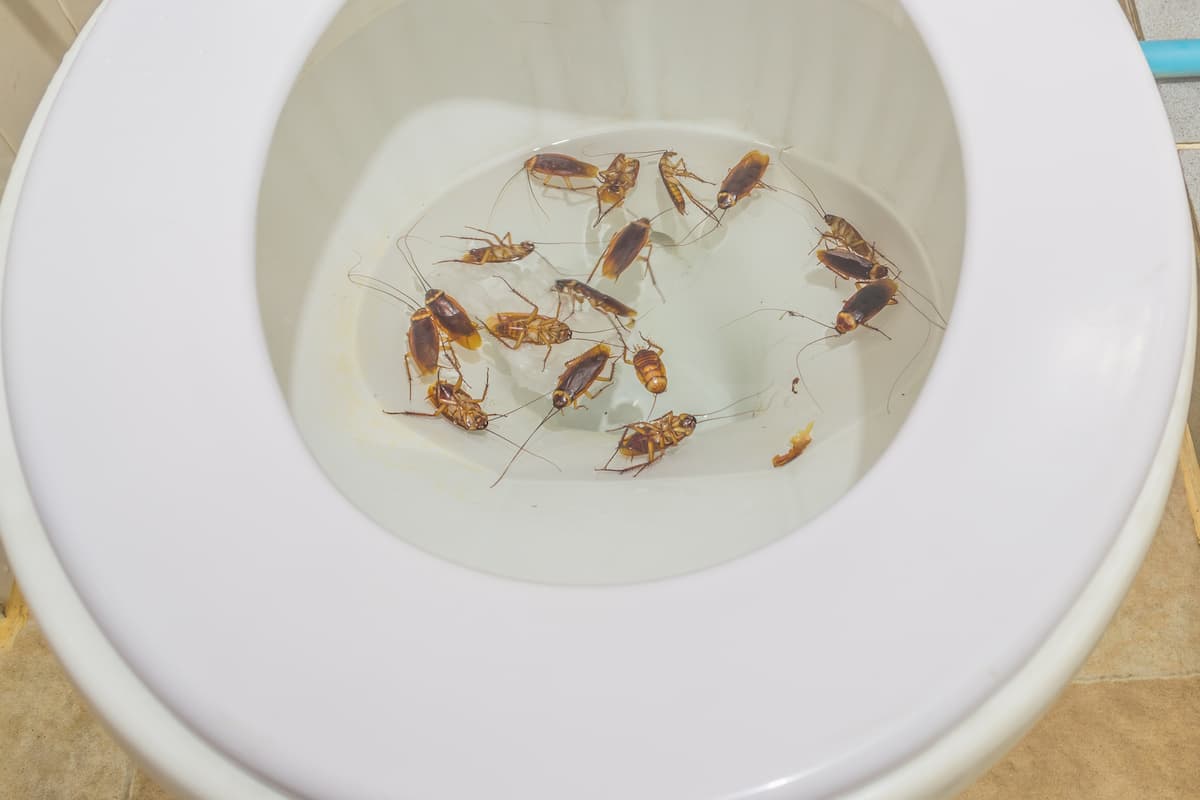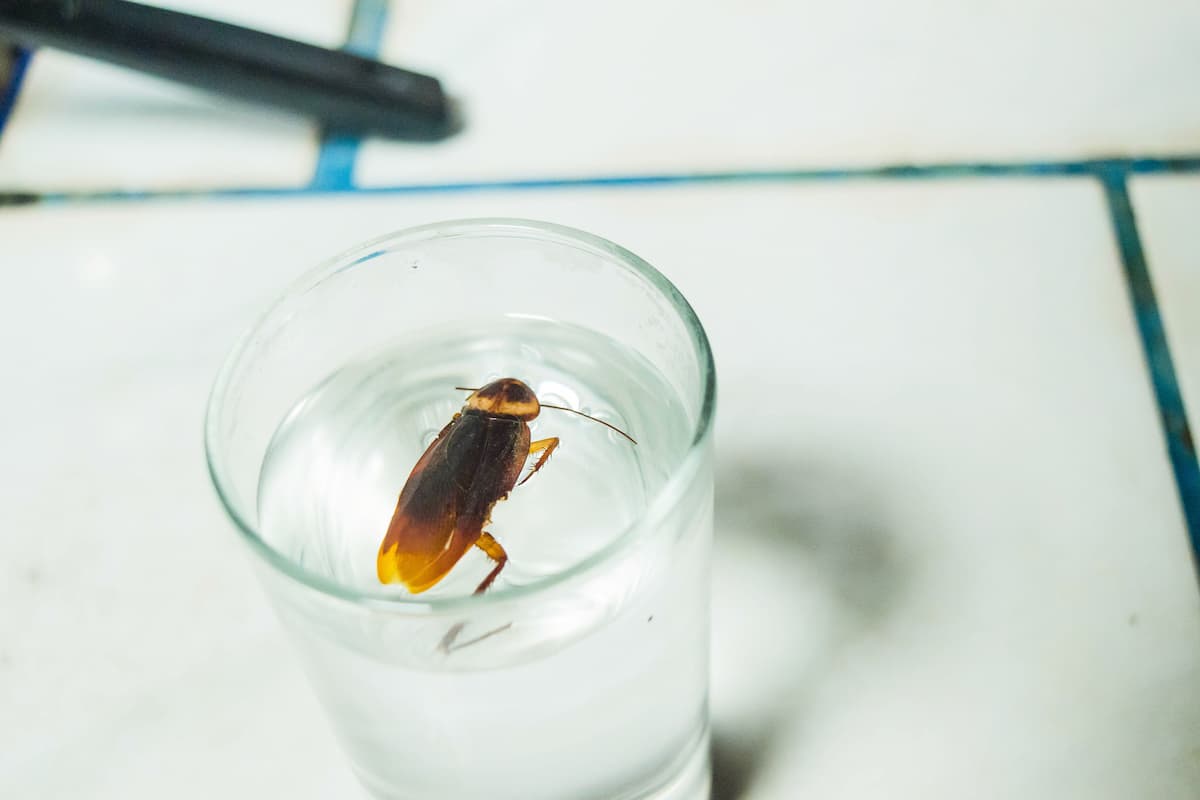Why Do Cockroaches Die When Put in Water?
Of all the methods you can use to kill a cockroach, drowning them is one of the most ineffective.
The insects can hold their breath for almost half an hour underwater, which isn’t ideal if you want them gone in seconds.
That said, roaches aren’t aquatic and will eventually die if you put them in water.
Cockroaches die underwater because they need oxygen from the air to breathe. While they have spiracles all over their body and closing these pores helps them hold their breath for some time, they will eventually drown.
Cockroaches are still some of the most resilient creatures on the planet, and it’s no surprise that submerging them in water doesn’t eliminate them quickly.
Understanding their survival mechanisms is essential to getting rid of them.
How Do Cockroaches Behave Underwater?

Cockroaches float underwater – a weird statement since they can’t swim.
However, this survival mechanism isn’t a result of good navigation underwater.
It’s because they’re full of air, which makes them less dense and, in turn, allows them to float.
This air comes from the closing of spiracles, which are tiny openings all over the body that help cockroaches breathe.
When the insects are dunked underwater, they close them to trap the existing oxygen and keep out the water.
This adaptation keeps them alive for longer as they can hold their breath underwater for around half an hour.
It’s a helpful mechanism seeing that cockroaches can also play dead. Pair the two together, and your waterlogged cockroach might fool you into thinking it has met its maker.
In reality, it’s just waiting for you to leave before finding an escape route.
That means they have more patience than you in such situations. Unless you’re conducting scientific experiments, you’re unlikely to wait that long for a cockroach to die.
The exception is if you put it in a large pool of water with no surface to hold on to when it’s time to escape.
Cockroaches can’t swim – they just kick their legs around to find the nearest edge to cling to and climb out of.
If there’s nothing to hold on to, they’ll drown once their air reserves run out.
That’s a positive if you have access to a large body of water with nowhere for the roach to escape, but trying to drown them in a glass or bucket is futile.
How Do Cockroaches Behave in Hot Water?
Cockroaches either die in hot water or run away from it.
It all depends on the water temperature.
Cockroaches are cold-blooded, so exposure to extreme temperatures will harm them.
However, you must maintain the heat for a certain period of time.
Also, while higher water temperatures increase the effectiveness of eradication, the water must be above 125°F (51°C) to ensure they’re dead.
Lower temperatures disturb the insect, and they might even go away when they find a proper escape route, but you can’t kill them with temperatures less than 125°F (51°C).
This process can work if you use a washing machine.
The hot water setting heats the water to at least 130°F (54°C), so turning it on should do the trick.
It’s not a proper use of your time if you use it as your primary eradication method, but it’s the most effective technique if the insect is stuck to your clothes.
Another way of using high temperatures to kill a roach is by dunking the insect in boiling water for several minutes.
No amount of spiracle closing will help it out, as temperatures of 212°F (100°C) are too hot to handle.
How Do Cockroaches Behave in Cold Water?

Cold water isn’t as effective as hot water.
Cockroaches are more resilient under lower temperatures and can even survive being frozen.
The freezing point of water (32°F/0°C) won’t do you any good, so you have to lower the temperatures even further for the method to be effective.
Sub-zero temperatures are the way to go.
The temperature also has to be consistent as gradually lowering the temp gives the insect time to adapt to the new environment, making your efforts futile.
Using your freezer is effective as the temperatures are already below zero.
Like hot water, however, you need to give the process quite a bit of time.
Because cockroaches are more resilient to lower temperatures, exposing them to the cold for several hours will give you the best results.
For a more advanced technique, you can spray the appliances with carbon dioxide to freeze the inside compartments.
For faster results, hot temperatures are the way to go.
How Can You Make Sure a Cockroach Drowns?
To ensure a cockroach drowns, you must crack its exoskeleton (the outer protective shell) and fully submerge it in water.
If its body isn’t intact, it can’t trap air.
If you crack the exoskeleton but don’t fully submerge it, it might still get the occasional gasps of air. You must cover the entire roach with water to avoid oxygen getting in.
It’s an intriguing process if you’re making observations, but it’s an absolute time-waster if you simply want to kill it.
Also, since cracking the exoskeleton is half the job, you might as well finish it by just crushing the creature altogether.
Conclusion
You shouldn’t rely on water to kill a cockroach, especially if the water is warm or at room temperature – the creature’s resilience is almost supernatural, and they’re crafty escape artists.
Using water to kill cockroaches requires patience, which most of us don’t have when killing insects trying to invade our homes.
If it’s within you, go for it; otherwise, just grab a vacuum cleaner (or a shoe) and call the exterminator.
